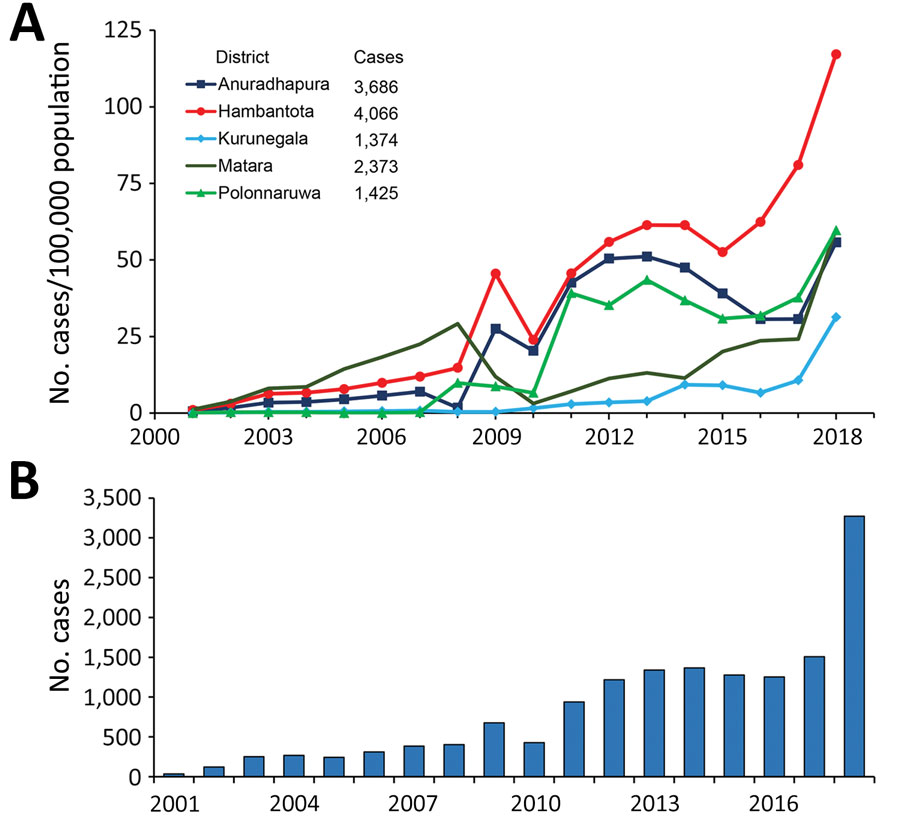Volume 26, Number 1—January 2020
Synopsis
Spatial Epidemiologic Trends and Hotspots of Leishmaniasis, Sri Lanka, 2001–2018
Figure 3

Figure 3. Changes in leishmaniasis incidence and case counts, Sri Lanka, 2001–2018. A) Leishmaniasis incidence rates for 5 districts with the highest numbers of reported cases. B) Nationwide reported leishmaniasis cases by year.
1These authors were co–principal investigators for this article.
Page created: December 18, 2019
Page updated: December 18, 2019
Page reviewed: December 18, 2019
The conclusions, findings, and opinions expressed by authors contributing to this journal do not necessarily reflect the official position of the U.S. Department of Health and Human Services, the Public Health Service, the Centers for Disease Control and Prevention, or the authors' affiliated institutions. Use of trade names is for identification only and does not imply endorsement by any of the groups named above.